Spotlight on Aubrey Garrison
Integrating circuits, art, and literature is not always an easy feat! In today’s post, we are featuring a dynamic middle school educator who boldly reimagines book reports and book clubs to be much more engaging and exciting for students.
Language Arts teacher Aubrey Garrison, in collaboration with Jill Dawson, has created an engaging lesson that focuses upon making a literary lesson light-up and pop-up! Designed for educators who are interested in integrating STEAM with literacy, this classroom tested lesson will help your students see how book reports, especially after the summer slide, can be so much more!

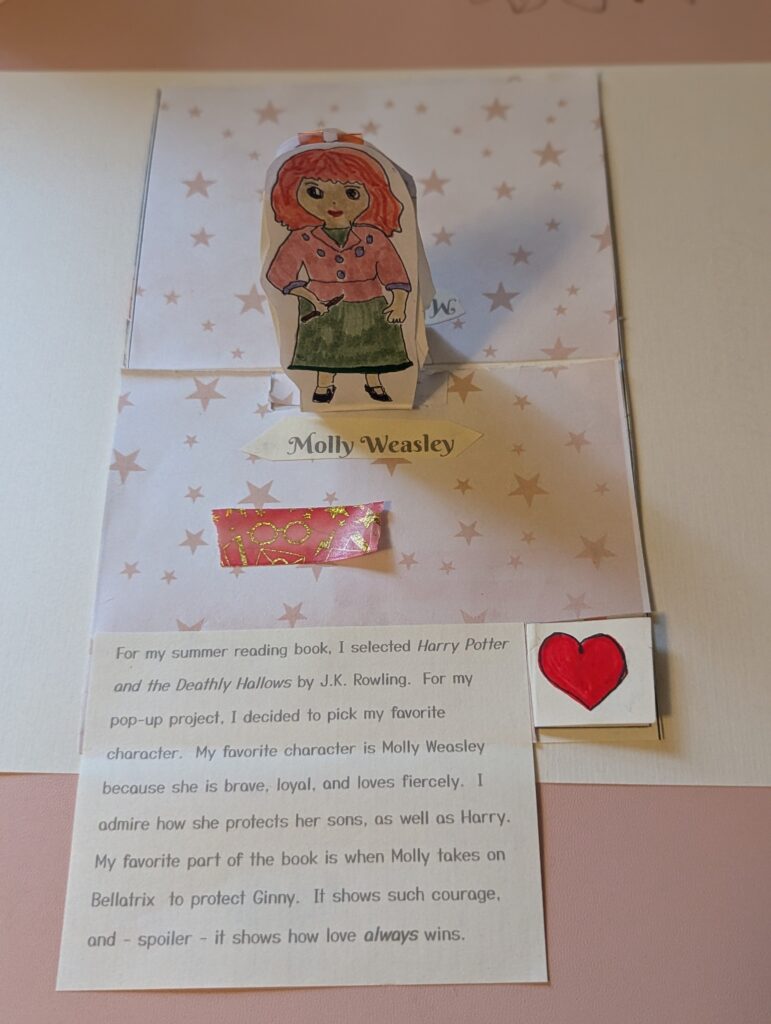
Teacher’s Corner
Download a PDF of this lesson
Lesson Goals
This project’s goals are to increase student engagement, problem-solving, collaboration, and communication, as well as create a space for students to have enriching conversations about the books they read. I hope students will begin to see how art and STEAM can become a basis for personal growth in literacy as well as a great way to have more meaningful conversations with their peers about reading.
Lesson Inspiration
I was looking for a way to help build natural accountability for independent reading into my middle school language arts classroom. I wanted student work to be authentic, meaningful, and relevant instead of route. As a result, I decided to revive regular book clubs in class, with a pop-up project for our first project. This lesson plan is designed to use students’ summer reading books (but any book will work) as a springboard for creativity and connection.
Lesson Summary
Target audience: 7th & 8th grade language arts students as part of small group book clubs
Each student will create a pop-up project (Thank you, Jill Dawson!) that showcases an element of their summer reading books. Students will have a choice of several different pop-up structures as well as what element to highlight. Each student will also write an artist’s statement explaining what they created and how it showcases the part of the book they wanted to share. Students will then share their projects as part of an inaugural book club meeting to introduce and establish book club groups for the quarter.
Standards and Proficiencies Addressed
Big Ideas & Details:
I can provide an objective summary of the theme or two or more central ideas and how it develops over the course of the text, including its relationship to the characters, setting and plot.
Collaboration:
I can effectively engage in a range of collaborative discussions with diverse partners on grade 7/8 topics building on other ideas and expressing oneself clearly.
Range of Reading & Text Complexity:
I can regularly and independently read and comprehend a variety of literary and informational texts, in the grade-level band of complexity.
Clear & Effective Communication: GUM
I can independently apply grade level standards of punctuation, spelling, grammar, and word use.
Lesson Plan/Activity
This project will take approximately eight to ten 45 minute class periods to complete. Below is an example schedule from my own classroom. Here is a linked slide deck that I have used with classes of about 20-25 students.
| Day 1: Project Intro Start Planning Sheet | Day 2: Finish Planning Sheet Review Video Models Pop-up Practice | Day 3: Select a Model Begin Prototyping | Day 4: Finish Prototyping |
| Day 5: Quality-Control Check Artist’s Statement | Day 6: Begin Final Project | Day 7: Finish Final Project Individual Reflection | Day 8: Book Clubs Meet/ Share Group Reflections |
Day 1:
- Introduce the project to students by sharing slides 1-8 of the slide deck.
- Show slide 9 of the slide deck and pass out planning sheets to your students.
- Each student should complete a planning sheet. I used a planning sheet from this resource.
Day 2:
- Have students finish their planning sheets, if needed. Here is a do-now I created to help students with this.
- Next, review Jill Dawson’s video, which shows several different pop-up templates and how they can be used to create a scene.
- Randomly give students different pop up templates from this resource and have them see if they can create the shapes.
- Debrief with students about success and challenges and make a list of things to remember. For example: use a ruler to fold a straight edge; precision matters, etc.
Days 3 and 4:
- Now that students have had time to think about their books, why these books are important, and what they want to share AND have also had time to play with pop-up structures, it’s time for them to connect these two components.
- Each student should pick the pop-up shape they’d like to use (Consider making the video linked in day 2 an available resource for students to review.).
- Next, students should make a prototype (rough draft) of their work, which includes their design, their pop-up, and their circuit.
Day 5:
- Once a prototype has been finished, encourage students to do a quality control check. What works well? What could be improved? What changes should be made to the final version? Consider providing a checklist for students to use to help them organize their thinking around this.
- Have students work on creating an artist’s statement about their work. Here is a template I created and posted on Google Classroom for students to use.
Days 6 and 7:
- Once students have working prototypes and notes for their next iteration, provide ample time for them to work on their “final” version/next iteration.
- I suggest allowing at least two 45 minute class periods with checklists for what should be completed each time.
- After they’ve completed their work, I suggest having students reflect on their process and product. For example: What was the best and hardest part of working on their pop-ups? What did they learn about themselves? What did they learn about integrating circuits into their thinking about literacy? How did this change their thinking?
- The above reflection questions will also be good preparation for when students share their work in book clubs.
Day 8:
- Consider holding book clubs during the class period following student completion of pop-ups.
- Before the book club meetings:
- Decide how groups will be made; consider involving students in this process.
- Discuss group norms, “must do” and “may do” opportunities.
- Consider inviting students to bring in a snack to share that somehow connects to their book.
- Review how to provide warm and cool feedback; I like calling this glow and grow statements.
- During the book club meetings:
- Students meet in groups of three- four students.
- Each student should showcase their pop-up and read or discuss what they wrote on their artist’s statement.
- Students offer glow and grow words to each participant. Consider providing a written handout for this. You can find an example of such handouts in this feedback resource.
- After the book club meetings:
- Give students time to reflect about their collaboration individually and in groups.
- Foster a class discussion about what makes this project different from and similar to other “book report” or reading “accountability” assignments.
- Gather feedback for the next book club meeting and start planning the next one!
Materials
For small groups to share:
(I recommend at least one set for each group of 4 students.)
- Conductive Fabric Tape or Copper Tape
- Conductive Fabric Patches (optional but recommended if using Copper Tape)
- Cardstock in colors of your choice (110 pound is ideal, but 65 pound will work)
- Scissors
- A ruler and an embossing tool, such as a toothpick Pencil with an eraser
- Hole punch
- Glue sticks or double-sided tape
- Cardstock
- Access to a printer
- Assorted art supplies such as: markers, colored pencils, washi tape
For each student:
- One or more Circuit Sticker LEDs per pop-up
- 3V coin cell battery
- Printed copies of the pop-up templates created by Jill Dawson
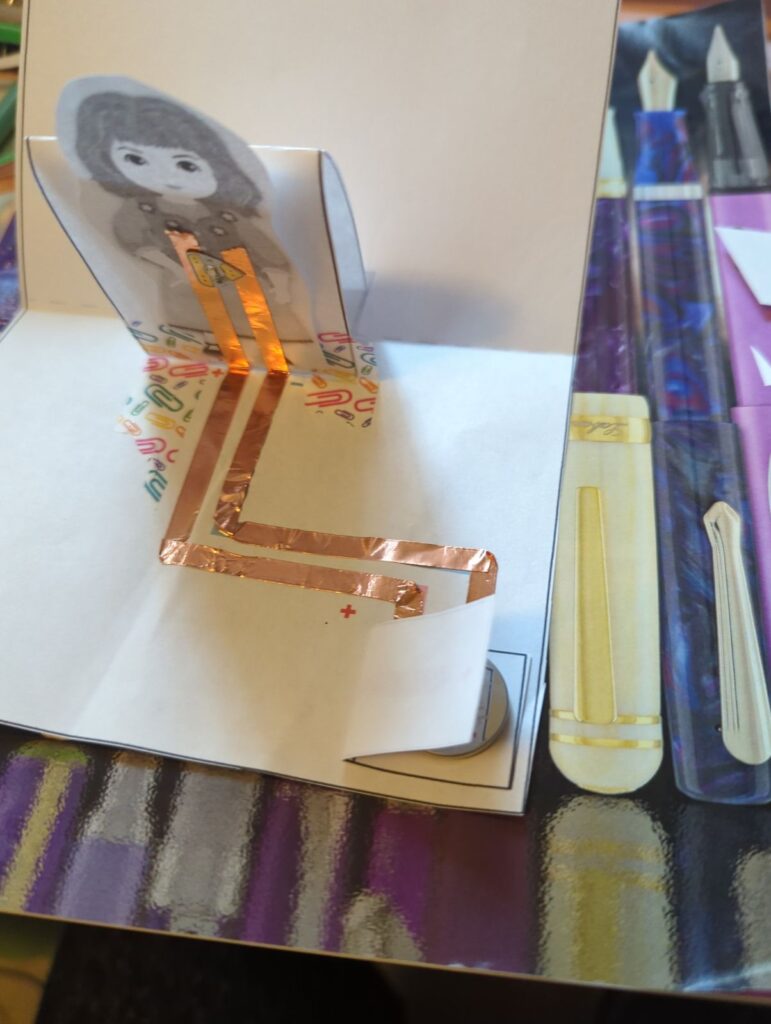
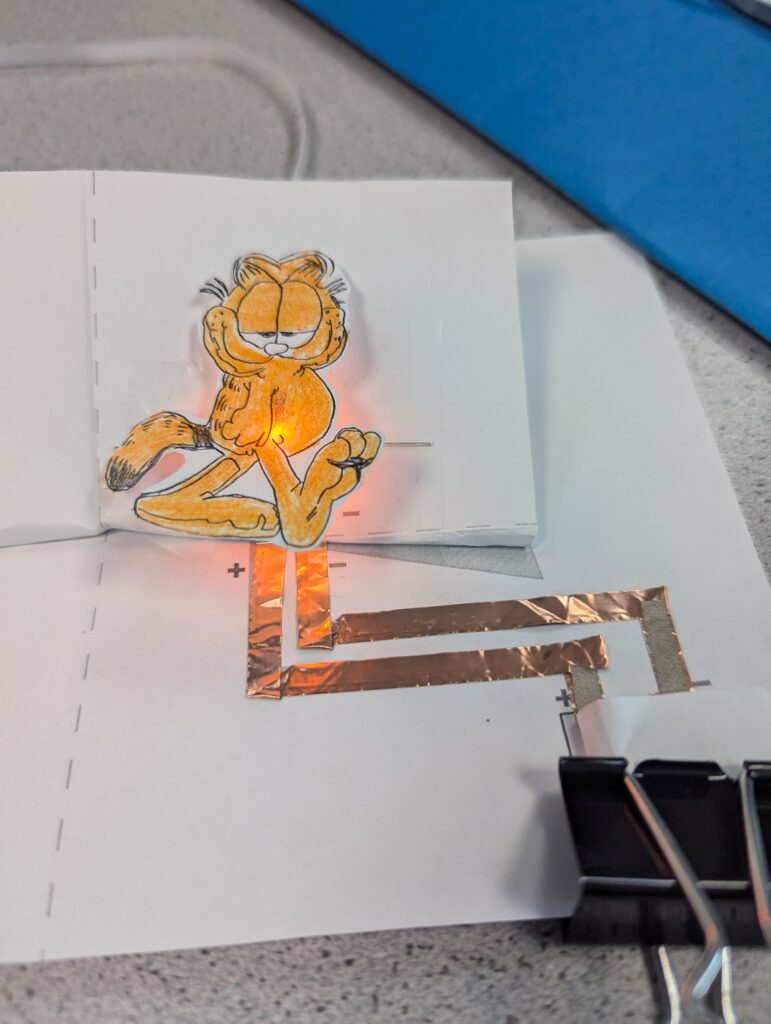
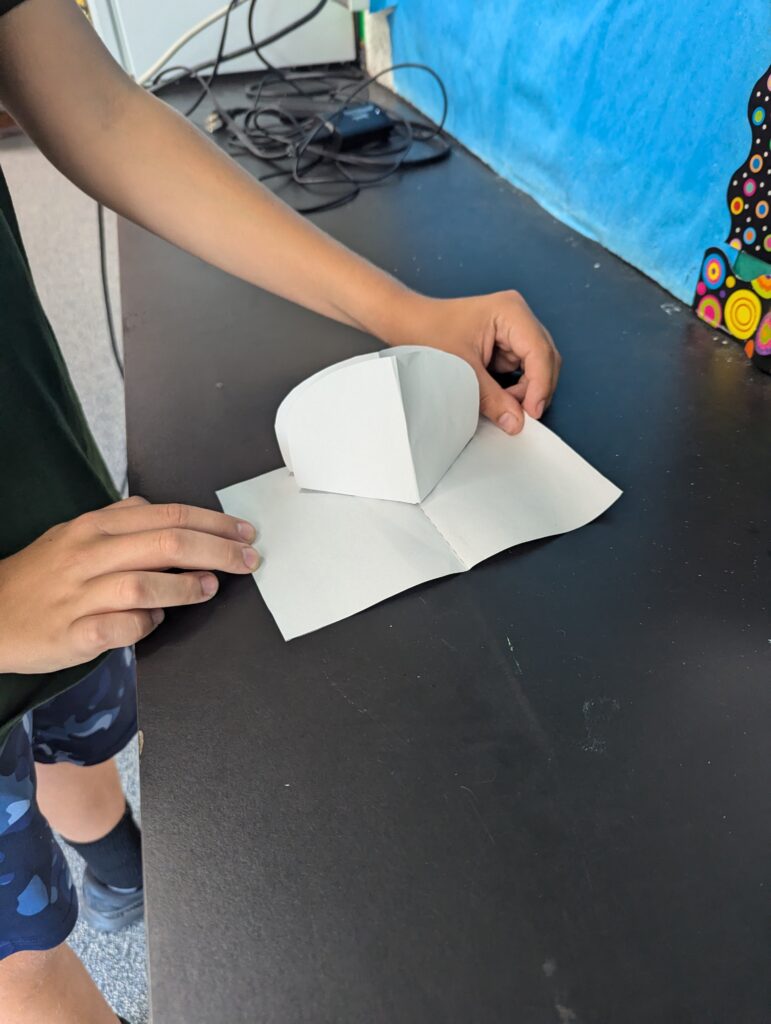


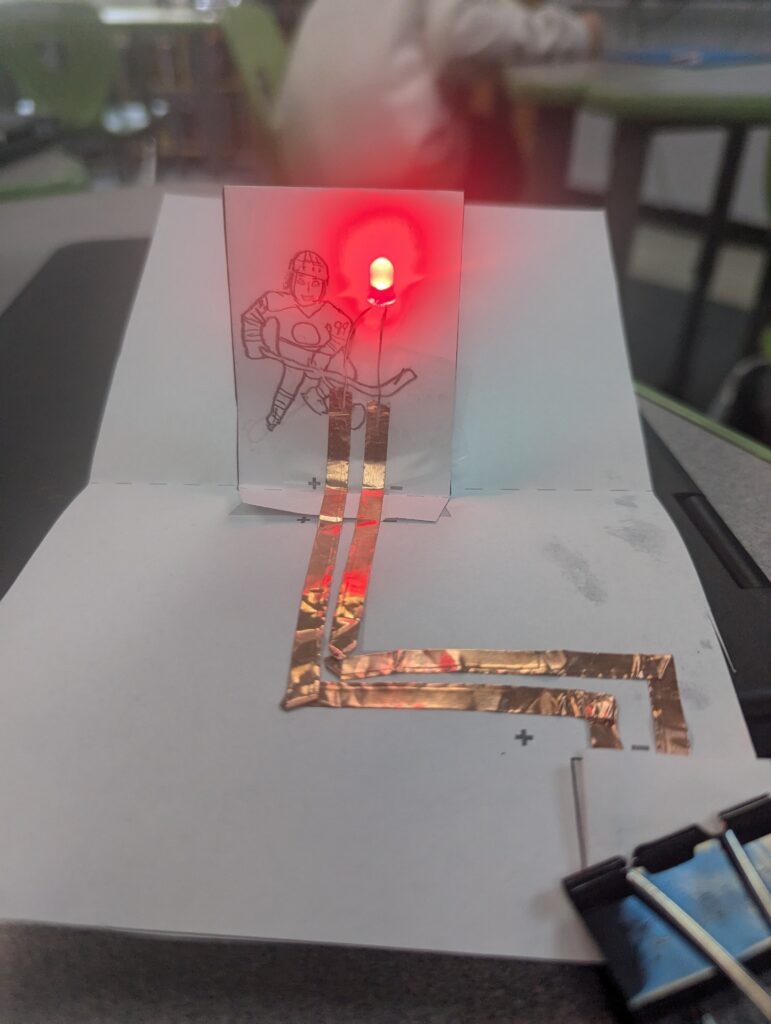
Challenges
One of the biggest challenges I faced throughout this work was managing the behavior of students who were waiting for assistance from a peer or teacher. These students were very tempted to get off task or “play” with our limited supplies. One way that I solved this problem was reminding students to ask three peers before me. Often, someone else in the room could help. I also had a running “appointment” list on the board, where students could sign up to meet with me during class work time.
Time was a challenge, especially with other skills and requirements competing for attention. One solution that worked for us was to schedule the same time every period (the last 30 – 45 minutes of class) to work on pop-up projects.
Highlights
- This project was engaging on many levels, so almost every student found something to focus on and really dive into with their work.
- I adore the creative freedom and expression cultivated in this project.
- Possibly the most meaningful highlight for me is watching students who may not normally be confident in their literacy skills gain confidence through STEAM and creativity.
About the Educator
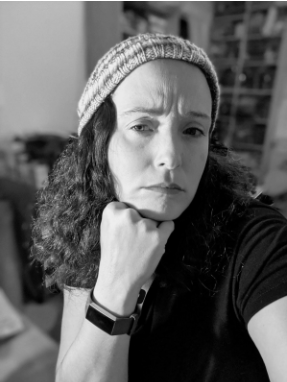
Aubrey Garrison teaches Language Arts at Colchester Middle School, in Colchester, Vermont. She absolutely treasures finding creative and compassionate ways to help students tell their stories and increase their literacy skills. When not teaching, you can find her knitting, reading, journaling, or spending time with her family.
If you have questions about this lesson, you can get in touch with Aubrey by emailing her at aubrey.garrison@colchestersd.org.
About our Educator/Lesson Spotlights
Chibitronics is dedicated to sharing the work of our wonderful educator community. We enjoy showcasing ways that teachers capitalize upon their students’ creativity with circuits.
Are you an educator who would like to be featured? Or, do you know of an amazing educator who is integrating circuits with their lessons?
If so, reach out to us at education@chibitronics.com to be featured.
